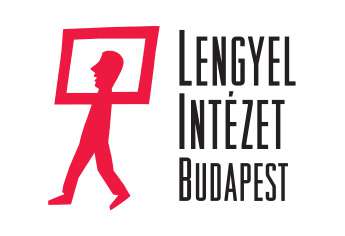The Unconventional Family Image, Matilda, and the Fairy Garden

Released in 1988, Matilda was the children’s book that testified to an unconventional idea - that you have a choice in defining what your family should be. Matilda, the main character of the story, has always longed for a family that lives up to its culturally assigned meaning. Matilda’s parents are so consumed in their sketchy business and television’s entertainment to acknowledge Matilda’s abilities. She functions rather independently in life due to her family’s negligence and her desire for knowledge. At school, Matilda’s teacher is Miss Honey, who was raised by an evidently abusive aunt after her father’s death. The two gradually develop a familial companionship. Miss Honey is protective, caring, and shares the same love for education, which makes her an incredibly fitting parental figure for Matilda. In the end, Matilda asks to stay in England with Miss Honey while the rest of her family runs away to escape legal consequences. To her, biological parents are not what constitute a happy home. What makes a family is definite love and care, and unconditional support.
This untraditional image of a family opens the discussion to many forms of growing patterns in modern families. As our society undergoes continuous changes regarding factors like economics, religions, demographics,..., more people start to seek for happiness outside the convention of the legalized family with two heterosexual parents and biological children. Rather than the downfall of the family institution, it is more reasonable to view this shift as a sign of its gradual evolution that "maintains many of its traditional functions and structures while adapting to changing economic circumstances and social ideologies" (Macklin 317) [1] .
Somewhere on the outskirts of Budapest, there used to be a family like Matilda and Miss Honey’s, where two people decided to form an unconventional family unit when they found sympathy and strength in staying together, as we see in Gergő Somogyvári’s documentary, Fairy Garden. But real life is never as magical as life depicted in children’s books. Laci, who is a 60-year-old homeless man, took in Fanni, a 19-year-old transgender woman after Fanni was kicked out by her family. Fanni sometimes left for days, or weeks, to find job opportunities, but she always came back to the fairy garden that Laci constantly worked on renovating. The fairy garden, which was frequented by stray cats and sometimes wild boars, was a makeshift home surrounded by trash and recyclable materials. Fanni, often in her eye-catching dresses, helps Laci with heavy work like cutting wood. In one of the early scenes, we see Laci giving Fanni a watch as a gift, he even fixed it to better fit her wrist. Although he was also struggling financially, he kept assuring Fanni that they would somehow make enough money to afford sex reassignment surgeries. Besides the scenes of Laci working diligently and him voicing his concerns for Fanni, the observational mode [2] allows neither enough details to criticize him, nor enough to pity him. He is presented much like a traditional father figure – hard-working and caring, but was somewhat distant to youngsters’ struggles. He often criticized Fanni for “being lazy” and not helping around the house. However, he told her “We’ll manage it somehow, don’t worry” when she expressed her anxieties about the future, and suggested getting medical help if she felt too mentally unwell.
Fanni, in response to his fatherly position, took the role of a teenage daughter. She loves expressing her identity with makeup and beautiful feminine dresses. Fanni was the fairy of Laci’s garden: she added to a comment on her dress, that she looked like “a spring fairy in this dress”. She craved the love and attention from people around her, and from the Internet when she actively interacted with her online community. Fanni, like a large number of teenagers nowadays, struggled with online negativity: she sometimes acknowledged the spiteful comments and insisted that she would ignore them. But it is totally understandable if this partly contributed to her decreasing mental health. She was never shy to express her affection and desires: when she comforted Aranka, when she demanded privacy from Laci, or when she regularly checked herself out in the mirror and fantasized about her future appearance after surgeries.
Although the relationship resembles a father-daughter dynamic, we cannot help but notice some unconventional elements. Laci and Fanni’s living space was covered to the ceiling with women’s nude pictures. Fanni told Laci to remove the pictures so she could do livestream inside the house, but the only thing underneath the pictures is the insulation material. They agreed to cover it with some wallpaper instead, but this idea was never realized. They treated stigmatized topics like sex, transgender identity, mental health and sex work rather naturally for two people that supposedly lived in conservative communities. In one scene when Fanni was preparing herself to meet someone for sex work, she asked Laci: “How slutty do I look?”, which Laci replied with: “Very much so”. This openness to sexuality and sex work on one hands implies a certain level of comfort that they feel around each other, but on the other hand reveals a harsh living condition where sex work is commonly considered as the last resort for a young woman to make a living. Fairy Garden’s magnificent cinematography does not drive the attention away from the struggles of the duo, but instead filters it with a magical and dreamy lens. Next to the trash piles and unfinished renovation projects are the growing nature and living animals. Laci planted flowers in unused car tyres and combined the mismatched chairs into a living room space. The house was fully decorated with things that were most likely thrown out by other people. In someone’s abandoned goods, someone else found their home where they can return to. The fairy garden was strangely beautiful and comforting in that sense.
The disappearance of Laci’s fairy garden added to the unpredictability of Fanni’s future, and raised concerns for others with similar situations. The film proves to us that when genderphobia is adopted as a political tactic for fear-mongering (Takács et al 39) [3], the people that have already been the outcasts of society continue to bear greater consequences. Youngsters from the LGBTQ community cannot find work if they announce their sexual identities, which, in all probability, drives them to homelessness, except homelessness has been criminalized, as the seventh amendment of Fundamental Law of Hungary was passed in 2018 to ban using public spaces for habitation. Now homeless people in Hungary is even more prone to harmful judgements and violence (Faragó et al 2) [4]. Perhaps the documentary ending with the elimination of the garden and an uncertain future for Fanni is essential to establish the destructive consequences of the policies.
References:
[1] Macklin, Eleanor D. "Nontraditional family forms." Handbook of Marriage and the Family. Boston, MA: Springer US, 1987. 317-353.
[2] Nichols, Bill: Introduction to Documentary. Indiana UP, 2017. pp. 156–157
[3] Takács, Judit, Katherine Fobear, and Szilvia Schmitsek. "Resisting genderphobia in Hungary." Politics and Governance 10.4 (2022): 38-L48.
[4] Faragó, Laura, et al. "Criminalization as a justification for violence against the homeless in Hungary." The Journal of Social Psychology 162.2 (2022): 216-230.
Nguyen Thao Phuong
ELTE BTK Film Studies

















































